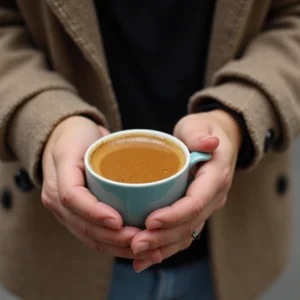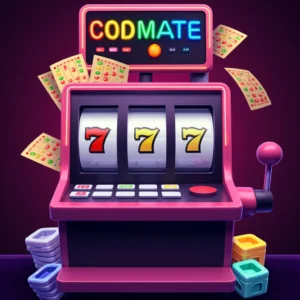Roger Dooley's Neuromarketing Tips

Neuromarketing Tips
-
- $1.299.00 is perceived as more expensive than $1299. Because of the punctuation, it is longer for the consumer to read the price and therefore, consider the price as higher. Did you also wonder why in most restaurant menus, prices are indicated as 12 instead of $12? Indeed, removing the currency sign allows reducing the pain associated with money spending. Then, an optimal price would be with the least punctuation possible and the less sign associated with a price (currency sign). However, it exists exceptions to this finding; prefer 499.99 to 500, even if the difference is very little it has been proven as a powerful unconscious factor of reducing the perception of a “high” price.
-
- Another very surprising finding is that placing “You can trust us to do the job for you” at the end of an ad for a service firm can cause their trust scores to jump up to 33%. Even without other elements of the services (better or quicker results) it can create a perception of “fair treatment” up to 20%, “quality” up to 30% and “competency” up to 33%. You can trust me!
-
- Did you think that one of your ears could be more receptive than the other one? Research shows that we do not only have a preference for processing spoken information via our right ear but that requests make to that ear are more likely to be successful. This tip can be applied in conferences and trade shows, where the noise level is high, to speak directly into the ear of your auditor. It can also be used at a business dinner; sit at the right of the decision maker, even if it has a small effect, it’s better than nothing.
-
- Research from John Bargh of Yale University found that your perception of a person could be influenced by the temperature of a beverage he/she gives to you. By giving to participants either hot or cold beverages, they had a higher perception of “warmth” personality for the givers of hot beverages. If you can offer a beverage to a client, prefer a hot beverage such as tea or coffee. Also, prefer a cup with no handle so that the transmission is more direct, and the perception of the client would be more favorable.

- According to a study by Joshua Ackerman from MIT, Christopher Nocera from Harvard and John Barg from Yale, “hard objects increased rigidity in negotiations”. Research in negotiations for a car price has proven these findings. Another finding from this study is that the softness of chairs can influence the buyer. According to them, “buyers in soft chairs increased their offer by nearly 40% more than those in hard chairs. Then, during a negotiation, make your prospect seated on a soft chair. Indeed, those seated in a hard chair “judged the negotiating partner as less emotional” and harder to bargain with. These tips will make your prospect unconsciously more emotional and more open to negotiation, you can also take a look at the environment of your future negotiation’s space to determine the softness of the objects that surround you, it could influence you as well!

-
- Une étude de l’université de Stanford démontre que les gens tendent à donner plus d’importance à une récompense plutôt qu’aux chances de l’obtenir. Selon Roger Dooley, la partie de notre cerveau associé à l’analytique et aux probabilités ne peut pas concurrencer avec notre centre de la récompense lorsque nous sommes confrontés à une somme d’argent plus grosse que le PIB de certains pays. Cela explique pourquoi les gens jouent aux jeux d’argent même lorsque nous savons que nos chances sont plus faible que d’être touché par un éclair ou pourquoi certaines personnes deviennent addictes à ce genre de jeux.
-
- In his book, Roger Dooley is referring to a Jason Zweig’s book “Your Money and Your Brain”. It more precisely refers to the power of stats. For example, patients fear more to hear that a surgical procedure causes the death of only 1 out of 20 cases than having a 95% survival rate whereas the result is the same. Moreover, an experiment shows that 79% of psychiatrists would be more willing to release a patient who has a 20% chance of committing a violent act within 6 months compared to only 59% of them if they were told that “20 out of 100” patients would commit a similar act. This difference lies in the fact that numbers refer to real people (2% injured compared to 2 out of 100). Therefore, use real numbers when conveying a positive message (9 out of 10 customers rate our product as “excellent”). Then, use percentages when presenting negative data (Only 1% of our customer provided negative feedback).
Bonus
- The Power of Type Fonts: An experiment asked participants to evaluate these 2 soups. The results? The second soup is perceived to be +64% “Tastier” and +100% of “Definitely buy” by the participants only thanks to the font type. Therefore, chose carefully your font for your print ads.
- The Power of Price Color: $299 vs. $299 , men perceived red prices as the double of its black equivalent, no clear explanations have been found yet about this result but it proves the effects of colors.

Psychological Experiments(for Non-Profit Organizations)
Experiment #1:
An experiment in Edinburgh began by planting hundreds of wallets on the city streets. Most wallets contained one of four possible photos: a smiling baby, a cute puppy, a happy family and an elderly couple. Other wallets had no photos at all.
Results:
- 88% of the wallets with the baby photo were returned
- 53% of the wallets with the puppy photo were returned
- 48% of the wallets with the family photo were returned
- 28% of the wallets with the elderly couple were returned
- Just 1/7 wallets without photos were returned
According to Dr. Richard Wiseman, the high rate of return for the wallets with that included a baby photo reflects an evolution-driven instinct to help vulnerable infants. Humans, in order to protect future generations, are wired to help babies, even the progeny of others.
Conclusion:
Include a picture in your wallet, and if you have a baby, include a picture of him/her.Dooley, Roger; “Brainfluence” p.145
(Because I don’t have photos, I included a kind message with my contacts for people who may find it, stating that I thank their kindness and good spirit and a smiley.)
Experiment #2:
Paul Slovic, a researcher at Decision Research, measured the contribution levels to a charity from people shown pictures of starving children. Some subjects were shown a photo of a single starving child from Mali; others were shown a photo of 2 children.
Results:
The subjects shown two children donated 15% less than those shown the single child. In a related experiment, subjects shown a group of eight starving children contributed 50% less money than those shown just one.
Conclusion:
We are drawn to stories about one person in crisis, but mass starvation or rampant disease barely engage us. Clearly, nonprofit marketers need to make their marketing effort as personal as possible and not only from the donor side but on the recipient side as well. This is real one-to-one marketing. Dooley, Roger; “Brainfluence” p.149
Thank Roger Dooley for all these findings!
Reference:
Dooley, Roger; “Brainfluence: 100 Ways to Persuade and Convince Consumers with Neuromarketing“, Publisher: Wiley; Print, 2011
